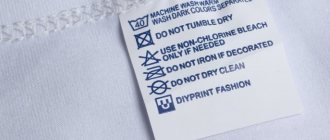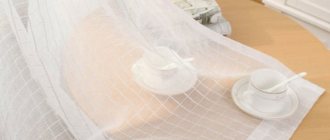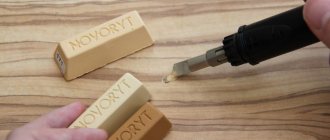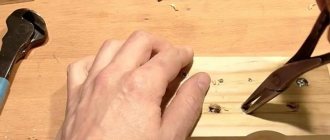Why did the tulle turn yellow or gray?
When you see that the curtains have lost their festive snow-white hue, you should not be upset. It is possible to return whiteness within 3–4 months. To decide how to bleach tulle, determine the type of material and establish the reason for the color change. Unpleasant color is caused by various factors:
- tobacco smoke;
- direct rays of the sun;
- ironing with a hot iron;
- proximity of heating devices;
- wash together with colored items;
- exhaust gases entering the apartment from the street;
- processing in hard or hot water;
- uneven rinsing, in which dust particles and grains of powder remain between the fibers.
Having established the cause of the contamination, it is easier to make the curtain white.
Kitchen curtains become dirty with soot and grease. Having determined the source of contamination, they decide how and with what to bleach the tulle from gray and yellowness.
Reference! Sometimes curtains made of organza, silk or muslin should be taken to the dry cleaner: at home it is difficult to remove dirty deposits from thin material. It is useless to try to remove old stains even with strong drugs. There is a risk of damaging textiles.
Why does tulle darken?
Everyone at some point is faced with the fact that purchased snow-white curtains quickly lose their freshness and acquire a yellowish or grayish tint. This is facilitated by:
- Dust - especially in those rooms where the windows “look” onto the road.
- Kitchen soot, grease deposits and cigarette smoke.
- Bright sunlight.
- Pets and small children “help” this.
- Frequent touching of hands - with constant movement of the curtain.
- Soot and ash particles in rooms with stove heating.
Time is also a factor affecting the color of threads.
Selecting a method
Young housewives sometimes do not know how to properly wash a tulle curtain. To wash away dirty deposits and remove stains, curtains are washed in a basin or in a machine with available products or substances for caring for fine fibers. Hand washing takes a lot of time. Automatic processing saves the housewife’s energy and time. In order not to spoil the material, return the white tint; the method, temperature and operating mode are chosen in accordance with the type of fiber.
Delicate fabrics require careful care
Methods for bleaching curtains
There are several ways to help make tulle snow-white again. Both hand washing and using a washing machine give good results. As a laundry detergent, you can use not only synthetic detergents, but also proven folk methods. Many housewives have already chosen “their” product, effective and reliable.
Important! Before bleaching, you must first thoroughly shake off the fabric to remove dust. Bleaching of dusty fabrics will be uneven and stains will appear on the curtains.
If you haven't tried bleaching your curtains at home yet, we'll tell you how to do it so that you'll be pleased with the results.
Handwash
If you know exactly how to wash a white tulle curtain by hand, even delicate organza, silk, and veil will not be damaged and will be cleaned. This is a gentle processing method in which the owner controls the process, regulates the force of influence on the canvas, preventing damage. Before washing tulle, select a washing liquid or powder and perform the following steps:
Preparing tulle
The product is removed from the cornice. Carefully shake out any dust accumulated between the threads. They try to deal with old stains before work: wash the stained area with a detergent, and wash it off after 3–40 minutes.
Additional Information! When washing by hand, avoid rough friction and the use of sponges and brushes. 10 - 15 minutes after soaking, the material is carefully squeezed and unclenched with your hands, and gently tapped.
Even dirty curtains need to be removed carefully and carefully.
Pre-soak
Pour lukewarm water into a large container and add gel or powder. Prepared items are placed in liquid. After 2–4 hours, if the textile is heavily soiled, replace the liquid with a new one. After soaking, the item is bleached. The treated curtains are rinsed twice to wash away any remaining powder and eliminate the odor. Dry flat, without squeezing: twisting causes holes and creases to appear. When the water has drained, the wet curtains are shaken and returned to the curtain rod.
Good to know, read: - The best and most effective ways to wash windows without streaks at home.
Using a washing machine
Until recently, machines were not designed to work with easily deformed curtains. Our grandmothers and great-grandmothers believed that nothing could be better than hand washing for tulle. To make it clean and not spoil, you need to correctly select and adjust the mode and temperature.
Optimal mode selection
Housewives whose washing equipment is equipped with a “delicate” or “silk” program can easily cope with the transformation of airy fabrics. They offer the correct operating temperature and conditions, taking into account the characteristics of thin tulle. What to do if your equipment is not equipped with such programs? In this case, it is recommended to choose “hand wash” at a temperature of thirty degrees.
Some manufacturers of household appliances offer housewives an alternative option - “wool”. This mode is characterized by the most gentle cleaning, during which the air tulle does not deform.
Basic recommendations for machine washing
Despite a careful approach to thin materials, you must adhere to several rules:
- fold the tulle curtains carefully. This will protect them from creases during the drum spin;
- veil, organza and silk, as well as other delicate variations, additionally place in a special mesh bag;
- give preference to gel and shampoo. It is very important to comply with the required quantity parameters. Thin tulles foam well, so half the standard dose will be enough;
- It is possible to completely remove particles of the detergent by additional rinsing;
- It is prohibited to use automatic spin. The curtains should dry on their own and remove excess moisture. If absolutely necessary, it is permissible to use minimum speed.
Special preparations are more expensive, especially for products for delicate curtains. Using a budget, inappropriate product will lead to the opposite result.
Additional components for flawless white tulle
During the machine washing process, you can use available ingredients that are intended for the manual method. For example, salt is not capable of harming the power unit and parts of the device. If a housewife wants to refresh old and dirty fabric, powder and salt alone will not be enough. It is necessary to pay attention to the gentle preparations presented on the market of household chemicals. Eg:
- optical brightener. Such products consist of special particles that settle on textile fibers. It is made specifically for snow-white materials. Their intended purpose is to visually lighten the tulle, rid it of yellow and gray tints;
- oxygen agents. They are not capable of destroying the structure of thin curtains and can be used for products with bright patterns. Designed to work with low water temperatures. As a result, they demonstrate an impeccable snow-white effect.
The easiest method is machine wash with the addition of one of the above bleach and powder. For old, dirty and discolored items, you will need to use another mode, for example, “extra wash”, “soak”.
We hope that the above tips and recipes will be valuable to you in the fight against deep stains, yellow and gray shades of curtains. By listening to them, every housewife is able to turn her own tulle curtain into a snow-white and luxurious decoration of the window opening and the apartment as a whole. Let the white color of tulle accompany you throughout your life!
Automatic wash
Wet cleaning in a machine will not spoil the structure of delicate fabrics if you set the mode correctly and choose detergents. Before you decide to wash a tulle curtain so that it is snow-white and clean, you should get acquainted with the algorithm of actions.
Preparing for whitening
The curtain removed from the cornice is freed from the hooks and cleaned of dust. Before automatic processing, the product is pre-soaked. To clean and bleach a tulle curtain at home, use a substance appropriate to the type of material. Delicate fabrics tolerate non-concentrated solutions of salt and soda.
Gels are rinsed out of delicate threads without leaving any traces
Choice of product
To wash tulle curtains at home until they are white, use oxygen-containing bleaches or products for cleaning white fabrics. The volume is calculated according to the instructions. It is prohibited to use preparations containing chlorine, since the element is potent:
- destroys delicate threads;
- provokes the appearance of a yellow-gray plaque;
- causes metal corrosion and destruction of rubber outlet pipes of the machine.
Before washing the tulle, it is worth softening the water, otherwise scale microparticles will get stuck between the threads and give the curtains a gray tint. To do this, powders with a softening effect (Ariel, Persil), tablets or Calgon gel are added to the detergent. Folk remedies soften liquid and whiten textiles:
- lemon acid;
- soda;
- shavings of light laundry soap.
When cleaning dense material, add soda ash.
You can soften water using folk remedies
Washing bag
The curtains are straightened, carefully folded into a rectangle and placed in a calico pillowcase or a special bag made of heat-resistant mesh. The outer shell allows water and air to pass through, retains the shape of the curtain, and protects the thin fabric from the accidental appearance of puffs and pellets. The packaged product is placed in the drum of the machine.
Reference! Even when using a bag, curtains should not be washed together with clothes and other things.
Which mode to use
Thin tulle curtains can be washed in a gentle cycle, after turning off the spin cycle. Thick linen and cotton textiles are also cleaned in a delicate mode, but spinning is allowed at low speeds. Depending on the material, it is determined at what temperature tulle curtains should be washed. Airy organza, veil or jacquard are processed by setting the low temperature mode (+30 - 35℃). When caring for flax and cotton, the temperature is increased.
Delicate mode is best for tulle.
Will modern store-bought bleaches help?
Whitening and other bleaches can restore lost color, but they must be used carefully. Many bleaching products contain aggressive chemicals that can lead to thinning of the threads.
Depending on the composition, curtain bleaches are divided into chlorine and oxygen. Each of them has its own advantages and disadvantages.
Chlorine-containing products
Chlorine-based bleaches destroy fabric fibers. Therefore, they cannot be used for washing curtains made of capricious fabrics: silk, tulle, nylon, organza, chiffon. You can occasionally bleach linen and cotton products with chlorine-containing products, but not more than once every six months.
Many chlorine bleaches cannot be used in washing machines - the substance can damage the drum and pipes. You should also not use aggressive chemicals if there are allergy sufferers in the house.
Oxygen-containing products
Bleach with active oxygen is available in the form of gel and powder. One of the most popular products is Vanish.
Pros of oxygen bleaches:
- the composition is safe for humans;
- can be used for white and colored fabrics;
- no need to pre-soak or boil the curtains;
- The product is suitable for washing in an automatic machine;
- Gently cleanses without destroying the fabric structure.
The disadvantage of oxygen-containing bleaches is their short shelf life (from 3 to 6 months). During this period, the activity of funds decreases by 5–75%.
Features of bleaching depending on the material
To decide how to make a tulle curtain snow-white, check what material the product is made from, choose a cleaning method and bleach.
Capron
Before you start bleaching the nylon tulle, the curtain is kept in a saline solution for 45 minutes. To care for nylon, use chlorine-free preparations and home remedies:
- starch;
- brilliant green;
- blue;
- laundry soap.
Nylon is bleached in cool (+30 – 35℃) water manually or by machine, setting the delicate mode.
Additional Information! Soot and traces of grease are removed with dishwashing gel. Before wet treatment, the dirty area is lightly moistened with liquid, after 30 minutes it is washed off, and the item is washed.
Organza
Light fabric made from twisted polyester or silk fibers should not be roughly rubbed or pulled. Chemicals should not be used for whitening. Yellowness can be removed using the following means:
- light laundry soap;
- hydrogen peroxide;
- salt;
- blue;
- brilliant green.
Hand washing in cool (not higher than +35℃) water is acceptable. If you clean it in a machine, turn on the gentle program.
Special delicate approach to delicate fabrics
Batiste
Translucent fabric is woven from cotton or linen fibers. Thin textiles are resistant to high temperatures. To clean and lighten, it is permissible to boil with soap or pre-soak with starch solution or ammonia. Rinse by adding hydrogen peroxide.
Veil
An airy veil made from cotton or silk threads must be taken care of carefully: the fibers are easily damaged. Hot water and substances containing chlorine are not used. Machine cleaning is acceptable if it is possible to set the speed to less than 400 rpm, a gentle program. Before loading into the drum, the item is carefully rolled up and placed in a mesh bag or pillowcase. You cannot wring out the veil.
With delicate products, the fabric looks like new for a long time
Kiseya
The fabric is made up of cotton, synthetic or silk threads woven together, into which beads, bugles or seed beads are woven. Needs careful but infrequent cleaning. The muslin is first soaked in starch liquid or hydrogen peroxide solution, then rinsed and washed with powder. Bleaching with ammonia after removing dirt in a powder solution.
Tulle mesh
The lightweight mesh fabric is created by weaving polyester threads and is therefore moderately durable. To keep it clean and snow-white, the curtain is dipped in a saline solution mixed with gel or washing powder. After 40 minutes, rinse.
Reference! Tulle can sometimes be treated with bleach. But if potent drugs are abused, the material will quickly lose its shine and strength.
Jacquard
The textile is woven from polyester, the weave of the fibers resembles lace. Jacquard fabrics look elegant and require careful handling. Therefore, soap, soda or mild chlorine-free products are used for bleaching. Machine wash only at low speed in cool water.
Many delicate fabrics are washed by hand
Chiffon curtains
Chiffon is a delicate material created from a mixture of cotton, synthetic and silk threads. On the surface of the canvas, puffs and pellets easily appear from a careless touch. The product is immersed in a cool soap-salt liquid until the components are completely dissolved. The washed item is not wrung out.
Tulle mesh
Dust and dirt particles accumulate in the cells. You should not pickyly choose how to bleach mesh tulle from gray: the mesh easily tolerates any bleaching compounds and processing methods. But twisting and squeezing are excluded in care: the structure of the delicate matter is quickly damaged.
It’s useful to know, read: - Simple ways to wash brilliant green in 5 minutes.
Linen tulle
Natural material is durable. Linen turns yellow in bright sun, but wears out from frequent cleaning. Before bleaching a yellowed linen tulle curtain, the item is dipped in a hot (45 - 50 ℃) washing solution. After 1.5 hours, rinse thoroughly, put in diluted ammonia or “Whiteness,” which refreshes the color of durable fiber if used rarely (once every 3 to 4 months).
Additional Important Information
[content-egg module=AE__mrdomru template=custom/grid3]
Fabric that has turned yellow from direct exposure to sunlight should:
- boil in a soapy water solution;
- wash with the addition of one part 3% hydrogen peroxide and two parts ammonia;
- apply bleaching with salt, then starch.
“Whiteness” gives an effect for one, maximum two washes. After the third, it gives the tulle a yellowish tint and its snow-white appearance is lost. Any careless movement may cause the fabric to tear.
Before starting bleaching, check what your tulle is made of. Each material has its own method of imparting whiteness.
For nylon curtains you need a gentle bleach. Table salt and a light solution of potassium permanganate work well. We recommend using blue or brilliant green with caution.
To ensure that the shape is maintained and the tulle falls in a beautiful cascade, treat with starch.
Organza tulle is very delicate when processed. It does not tolerate hot water and is bleached with salt or starch.
Voile curtains are airy and light, but they get dirty very quickly. They are bleached only with hydrogen peroxide and ammonia.
How to make tulle white using improvised means
Ordinary substances will help restore lost whiteness. Such products are hypoallergenic, effective, and affordable.
Salt
The use of these products requires soaking.
To cleanse dirt and bleach, tulle curtains are soaked in dissolved sodium chloride (for 5 liters - ¼ cup each of washing gel and salt). After 8-10 hours, rinse and wash using the usual method.
Additional Information! If you soak very dirty curtains twice (the first time in dissolved sodium chloride, the second time you add gel), you will be able to wash off even old grease.
Aspirin
The gray coating will disappear from the fabric after soaking in dissolved aspirin (take 5 tablets for 6 liters of lukewarm water). The textiles are cleaned of dust, placed in a basin, and filled with washing liquid. After 3 hours, wash.
Soda
An alkaline solution easily removes dirt and restores the original color of even old fabric. To prepare the detergent composition, stir 30 g of sodium bicarbonate and the same amount of powder into 10 liters. An hour after soaking, the curtains are washed in a machine or by hand. Curtains made of linen or cotton are treated with soda ash, veil, organza, chiffon - only food grade.
Reference! Remove the dirty gray coating and bleach the tulle with a mixture of salt and soda: take 7 tbsp for 10 liters. spoons of alkali, 9 tbsp. spoons of rock salt. The curtains, cleaned of dust, are kept in the prepared composition for 1.5 hours, then washed thoroughly. Wash with gel or soap.
Boric acid
Folk remedies will help remove grayness and yellowness.
The drug can bleach old nylon tulle, covered with a gray coating and yellow spots. It is easy to verify the effectiveness of the method; to do this, follow these steps:
- 30 ml of boric acid is diluted in five liters of warm liquid;
- curtains are soaked for 3 hours;
- rinse.
The product, which has regained its lost snow-whiteness, is straightened. Dry in a shaded place.
Useful to know, we recommend reading: What to do if a mercury thermometer breaks at home and mercury leaks out?
Vinegar
Table vinegar removes grayness and eliminates unpleasant odors embedded in the fibers. The curtains are dipped in a lukewarm salt-vinegar solution for 3 hours (the ingredients are taken in equal parts), then washed and dried.
Ammonia
Before bleaching tulle curtains with ammonia, the item is washed and then immersed in an unsaturated ammonia solution for 1.5 hours. After bleaching, rinse.
Additional Information! If dirt has become embedded in the thin fibers, ammonia is combined with 30 ml of hydrogen peroxide. In this way, soot and grease are quickly removed, and even old tulle that hangs in the kitchen is lightened.
Lemon acid
Dry matter or juice is added during the final rinse. Before this, the curtains are cleaned with white soap and lightened with peroxide. The washed curtains are kept in dissolved citric acid. After 15 minutes, carefully squeeze out without twisting.
Citric acid whitens and removes rust marks
Hydrogen peroxide
Hydrogen peroxide is a strong bleach that helps restore the whiteness of delicate tulle items. The curtain is placed in a capacious container, filled with diluted clarifier (4 tablespoons of the drug are used for 12 liters). After 4 hours, rinse.
Potassium permangantsovka
Restore the snow-white shade, remove stains and stains with a pale pink solution of potassium permanganate. The crystals are diluted in a transparent container and combined with shavings of light laundry soap. Stir and pour into a bowl of warm water. The curtains are soaked in foamy liquid for 3 - 4 hours.
Blue
Contaminated tulle can be cleaned in a washing machine or by hand. The washed curtain is placed in diluted blue for 25 - 30 minutes to remove the gray-yellow coating. The new soft blue shade will give the item an updated look.
Reference! When using dyes - blue, brilliant green - follow the dosage recommended by the manufacturer, monitor the saturation of the liquid, otherwise the curtains will acquire an undesirable color.
Zelenka
The yellowness will disappear from nylon and tulle after soaking in a saline solution with brilliant green. A bleaching agent is prepared from the following components:
- 0.5 liters of water;
- 4 table. spoons of salt;
- 20 drops of greenery.
The ingredients are thoroughly mixed, then diluted with water. The pre-washed curtain is immersed in a liquid greenish composition. After 15 minutes, the item is hung on a rope.
Laundry soap
Light laundry soap will return the yellowed product to its purity and snow-white tone. To do this, pour 0.1 kg of washing powder and 0.15 kg of soap shavings into a basin of heated water. The components are stirred until completely dissolved. The textiles are kept in the liquid mixture for 2 hours, turning occasionally. After treatment, wash. The final stage of cleaning is a gentle machine wash.
Additional Information! Curtains made from artificial fibers should not be cleaned with soap: the fabric irrevocably loses its shine.
Wash only with white soap
Starch
Starched curtains look elegant. Starch enhances the density of natural materials and repels dust particles. To make the fabric on the window gather into elegant folds, make a weak paste:
- First, the dry substance is dissolved and put on fire.
- Stirring constantly, bring to a boil.
- The boiling paste is poured into cold water.
- Breaks up lumps.
- The canvas is immersed in the prepared paste. They wait for the material to be thoroughly saturated with starch.
- Lightly squeeze and dry.
Wet curtains are carefully ironed.
Bleaching curtains in the washing machine
Thin and delicate fabric, which is used to sew tulle curtains, does not exclude the use of a washing machine for washing and bleaching them. In order for the procedure to return whiteness without damaging the fabric, you need to choose the right mode and detergent.
Pre-soak
The washing result will not disappoint if the curtains are pre-soaked. First, thoroughly shake off the dust from the curtains. Then they are immersed in a bowl of warm soapy water and left for several hours or overnight.
Mode
After soaking, the tulle can be washed. For delicate fabrics, only a delicate wash cycle with a minimum temperature (30°), double rinse, and a low number of revolutions (400) is suitable.
Important! To avoid creases in the material and make it easier to smooth out, you need to carefully roll the tulle before putting it in the drum of the washing machine.
Chemicals
An important point to achieve results is the choice of detergent. You can use any chemical suitable for your car, but only if one condition is met: the substance must not contain chlorine. In this case, washing can clean the material without damaging it.
Digestion
If washing the tulle did not help cope with yellowing, grandmothers and mothers boiled the curtains:
- they took a large enamel basin or bucket;
- water was poured into the container, soap shavings or powder were poured in;
- the product was placed into the liquid foam mixture;
- the container was placed on fire;
- after boiling, heated for an hour over medium heat, turning occasionally (the material was grabbed with metal tongs).
Curtains made from cotton fibers will become snow-white again after boiling.
Modern types of textiles add artificial fibers that require careful care. With prolonged boiling, delicate threads quickly melt and the fibers become deformed. Curtains made of organza, chiffon or nylon cannot be boiled. Curtains made from thick natural fabrics are sometimes boiled down, although the housewife has to control the process and should not leave the stove often.
Reference! If cotton textiles have turned yellow and dirty, the item is first boiled and then soaked in peroxide. If the dirty color remains, the fabric is kept in salted liquid, then rinsed and starched. Often this method should not be used: after 2–3 treatments, the fabric will become thinner and irrevocably lose its snow-white color.
Features of washing different types of tulle
To choose a bleaching method, they are guided by the composition and density of the fabric.
Organza, veil, chiffon
Mixed fibers such as organza, voile and chiffon are washed by soaking in soapy water for 3-4 hours. The water is not hotter than 30 degrees. Rinse in plenty of cold water.
Capron
Nylon tulle is soaked for 9-10 hours, ideally overnight. To do this, use solutions of salt, soda and soap. The result obtained is improved and secured with blue or starch solution.
Do not use chlorine or other aggressive bleaches: the fabric may acquire unnecessary hardness or a yellow tint.
Kiseya
Washing rope curtains is complicated by their appearance. To avoid hopeless tangling, the threads are tied in several places before being removed from the cornice.
Wash in soapy water by gentle squeezing. Heavily soiled curtains are pre-soaked for 15 minutes. Instead of soap, use detergents for washing synthetics.
Before washing in the machine, the muslin is braided or tied. Using a bag will prevent stretching and tangling.
Attention! For expensive curtains, only gentle and proven methods are used.
How to make fabric turn white using household chemicals
Most older generation bleaches contain chlorine. This element disinfects and brightens quickly, but aggressively - along with the yellowness, the structure of the fibers is destroyed. Such products should be used rarely, only for dense natural materials. To care for a veil, cambric, jacquard, choose chlorine-free compounds that act gently:
- Oxygen preparations containing sodium bicarbonate, hydrogen peroxide. When interacting with water, they release oxygen. Eliminate dirt, foreign odors and quickly exhibit whitening properties without disturbing the structure of the threads. The grayish-yellow coating returns after 2 - 3 weeks, but such compositions can be used regularly for washing curtains.
- Synthetic and natural materials are treated with optical brighteners. Powders remove dirt and lighten dark stains. Reflective microparticles do not eliminate, but hide the gray-yellow coating, so the curtains appear snow-white for 3-4 weeks.
Before washing the tulle, dissolve the detergent according to the instructions. Chemical mixtures act intensively even in cool water. Textiles are placed in the prepared bleaching medium. If using a machine, the clarifier and powder are poured into a special compartment. The washed item is rinsed and hung out to dry.
White
The clarifier is 95% chlorine. Causes allergic reactions. When working, wear gloves and open windows. The active ingredient removes yellowish circles, destroys dirty gray tint, and disinfects at +30℃. It is used for the care of linen and cotton curtains, for cleaning organza; muslin is not used, because the aggressive element thins the threads. Leave the curtains in the diluted mixture for 30 minutes before final cleaning.
Whiteness destroys delicate fabrics
Additional Information! After 1 – 2 soakings in “Whiteness”, the matter gets used to the active component and stops reacting to oxygen bleaches.
Wellery delicate white washing gel
Gently lightens cotton and synthetic fabrics. Contains optical brightening microparticles and enzymes. The hypoallergenic gel returns the snow-white appearance of curtains using any cleaning method, although it cannot cope with old dark stains, stubborn dirt and grayness. Dissolves in hot and cold water. Smells nice. Easily washed out.
Chirton oxygen bleach stain remover
Fragrant particles cleanse dirt and remove even old stains from berries, soot, and grease on curtains made of cotton and synthetic fabric. Chirton oxygen is considered one of the best effective drugs that restore the lost snow-whiteness of canvases. Enhances the effectiveness of gels. Intensively whitens at any temperature.
Other means
Similar preparations are used to bleach tulle curtains.
Bleaching preparations are selected for delicate threads
Frau Schmidt
Whitening tablets are designed for the care of delicate textiles. The packaging is designed for 5 wet treatments. Optical and oxygen-containing elements, enzymes destroy stubborn dirty stains even in hard and cool (+30℃) water. Does not cause allergies.
Cashmere
Small granules with optical brightening microparticles for the care of delicate natural and artificial fabrics. The yellowed fabric is soaked and cleaned in a warm solution. Removes nicotine film and yellowed greasy stains. Removes gray plaque from kitchen curtains.
Dr. Beckmann
Oxygen-containing sachets for machine cleaning of cotton and artificial fibers. The concentrated substance whitens, eliminates foreign odors, removes dust, soot and greasy stains at +20℃. Effectiveness increases when heated. Portion bags (0.08 g) are placed together with the item in the machine drum.
Optical brighteners are used for silk
Freshbubble
Oxygen stain remover with brightening properties. Without boiling, it removes contaminants of natural and inorganic origin. The granules do not contain chlorine. Effectiveness increases at temperatures from +50℃.
Splash
An oxygen-containing brightener with optical elements designed for wet processing of delicate curtains made of nylon, cotton and linen. Splash is conveniently packaged in 30 gram bags. The packaging is designed for one use. Pre-washed curtains are immersed in dissolved powder for 0.5 hours, then rinsed thoroughly.
Clean home
Oxygen microgranules with an optical brightening component are used for soaking and washing. One spoon of small granules eliminates fresh streaks and bright stains. To wash away old circles, double the dose.
Reference! Silk curtains are treated with special powders: Laska 3D wool and silk, Unipuls, Organic People.
How to bleach organza
You can bleach organza curtains and tulle using industrial or improvised means.
Industrial bleaches are divided into three groups:
- Chlorine - contains bleach and surfactants. The most famous representative is “Whiteness”. It is effective, but aggressive and can damage matter. It damages the skin of your hands, so you need to use the product with gloves.
- Oxygen-containing - contain hydrogen peroxide. Representatives: Vanish, Amway, Bos Plus. They are non-toxic and cause little damage to fabric. However, they are effective only at a temperature of 80 degrees; organzas are not suitable for washing. Optical brighteners - contain fluorescent pigments. They mask stains on fabric. The means at hand are less aggressive, but it is not always possible to bleach an item the first time.
- Baking soda. It is easy to bleach organza using a mixture of washing powder and baking soda. Mix a handful of washing powder and a tablespoon of soda and add 5 liters of water. Soak the curtain in the solution for an hour. Then it is washed by hand or in a machine using a special mode.
The suitable temperature for bleaching tulle is 30–40 °C. Regardless of the washing method, the fabric should not be wrung out.
How to remove stains
Thin transparent fabrics quickly turn yellow and gather dust. It is difficult to maintain freshness in the kitchen and keep the linens clean, even if a powerful hood is installed. Therefore, housewives are interested in how to wash tulle and remove the difficult-to-remove yellowish tint.
Rust
To remove rust stains from cambric, muslin or chiffon, the products must be dry-cleaned. At home, red spots are removed from thick cotton curtains using organic acids:
- vinegar;
- oxaline;
- lemon;
- wine
Warm water and 0.02 g of acid are mixed in a glass container. The dirty fragment is immersed in an acidic environment. After 15 minutes, the area is washed in a liquid mixture of ammonia and soda. This is repeated until the circles disappear.
Fat
Fresh splashes are removed using the following methods:
- The curtain is soaked in a soda solution. After 2.5 hours, wash with soap suds.
- The spot is sprinkled with crushed chalk. When the white particles absorb the fat, the chalk is cleaned off and a new layer is added (this is repeated until the dirt disappears).
- The fatty fragment is carefully washed with dishwashing liquid.
Old grease stains are washed off with a combination of vinegar, salt and ammonia. The components, taken in a ratio of 4:1:4, are applied to the damaged surface. After 20 minutes, the fabric is washed with liquid soap.
Additional Information! Stains are removed by moving from the contaminated periphery to the center.
Mold
A fungus that has grown on the curtains disrupts the structure of the threads and smells unpleasant. It is difficult to fight mold at home, but it is worth trying to remove a stain on dense material. The fungus is destroyed with citric acid or vinegar. First, the curtains are washed with soap or powder. Remains of detergents are washed off. The damaged area is watered with vinegar (lemon juice), and after 1.5 hours, sprinkled with salt. After the layer has dried, the material is rinsed.
Home remedies remove traces of dirt and whiten
Thin fabrics with decor require careful cleaning. It is difficult to remove grayness using improvised means: dirty stains often remain and textiles are damaged. Therefore, to clean a veil, chiffon or jacquard, you should contact a dry cleaner.
Reference! It is easier to remove stains if the product is soaked in an alkaline solution for 2 hours. The liquid will soften the dirt, wash away yellow circles and a grayish tint. Washing after pre-soaking will seal the effect of the soda.
Folk remedies
Before the advent of special chemistry, housewives used improvised means. They are still popular now, as they have a number of advantages: low cost, availability in the house, safety of use.
Folk remedies:
- salt (without iodine);
- soda;
- blue;
- starch;
- laundry soap;
- hydrogen peroxide;
- brilliant green;
- white;
- ammonia.
How to carefully bleach old tulle from gray plaque and yellowness
The fibers of old curtains are thin and saturated with dust. Due to friction and exposure to bleaches, textiles can tear before they have time to turn white. Therefore, old yellow stains are removed carefully:
- before washing old tulle curtains from gray, carefully clean the item by hand or using a machine (set to delicate mode, turn off spin);
- washed curtains are soaked in a mixture of peroxide and ammonia;
- rinse and dry.
Linen or cotton fabric that can withstand high temperatures is boiled with powder or soap.
Additional Information! Synthetics are returned to white with vinegar. Add 2 tablespoons to 5 liters of cool water. l. acids. The curtain is carefully placed in an acidic medium and stirred periodically. After 3 hours, rinse.
How often should you wash tulle?
The number of washes directly depends on the material of the tulle and the place where it is used. If this is a kitchen, then the fabric will definitely quickly absorb odors and greasy air. This may cause it to turn yellow or gray. Light tulle should be washed every two months. If the fabric is dense, then once every six months is possible. If a person with allergies lives in the house, then washing should be done every month.
Don't wait for the curtains to turn yellow or gray with dust. Wash them at the first sign of soiling. This way you will preserve their color and dense structure for a long time.
Folk remedies really save a lot of things, so you don’t have to worry about strange approaches and techniques. Such processes have been tested for years and still remain relevant. The main thing is for a person to choose a good and reliable cleaning product and apply the wash correctly.
Rules for drying and ironing
Wide canvases are difficult to care for. It is inconvenient to wash by hand in a standard container. When cleaning by machine, you have to check what speed and how many degrees are indicated on the panel. Be careful when drying and ironing, otherwise the textile will deform or melt.
Delicate material is ironed with a low-heat iron
Advice from experienced housewives will make your work easier and help you understand how to wash a tulle curtain without ironing:
- in the washing machine set the program without spin;
- When washing by hand, do not twist or wring out the fabric;
- the curtain is transferred to a dry basin and waited for it to dry slightly;
- The straightened product is dried on a ledge.
After 40 minutes, the curtain will finally dry out and, under the influence of its own gravity, straighten out. Small folds and creases that remain on a damp surface are steamed by weight or ironed through a double layer of gauze.
Tulle needs to be washed every 3 months, otherwise transparent curtains will become covered with yellowness or a layer of gray dust. Aggressive lighteners destroy delicate threads. If you regularly use delicate oxygen-containing preparations and use home recipes, the curtains will not be damaged, and the whiteness will remain for a long time.
How to starch tulle with your own hands
Over time, starched items acquire a film that protects the material from dirt and gives it a snow-white appearance. Starch makes tulle more durable and even a little crispier. A starched item holds its shape much better and does not need ironing. Over time, dust will settle on the surface of the protective film, so cleaning the curtain can be much easier. The starch will absorb all stains that will not remain in the base of the material. Clothes are not starched very often because after the process they do not allow air to pass through well.
To add shine to textiles, add a tablespoon of vinegar to the water when rinsing. Not only will it make the fabric shine, but it will also remove odors that have been absorbed into the curtains.
To make the mixture yourself you will need water and starch. Mostly people choose potato starch because it gives things a nice color and thickens quickly.
Tulle curtains in the kitchen are often covered with splattered grease. To remove grease stains from delicate fabric, use starch.
Advice. Before you begin the process, you should wash and dry the tulle well. The curtain can be dry or wet, it doesn’t change the essence. The main thing is that the item absorbs the substance well.
After the procedure using starch, under the weight of its own weight, the tulle will straighten out and take on its original appearance.
Consolidating the achieved result
The usual corn or potato starch is suitable not only for making delicious homemade jelly. He is able to restore the original whiteness of the curtain, adding a unique radiance to it.
Starch also helps to bleach white tulle, giving it dazzling purity.
The problem of how to properly starch tulle is solved quite simply:
- 250 g of the substance are dissolved in water for the penultimate rinse;
- the canvas is kept in this mixture for 3–4 minutes;
- followed by a final rinsing, shaking and hanging.
Items treated with starch are always slightly different from simply washed items.
Important! Starch not only whitens tulle and gives it shine, but also absorbs pollutants from the air. Result: after using it, it will be much easier to wash nylon or organza next time.
Starch allows you to keep curtains clean after washing.
How does starch affect whitening?
You can get rid of yellowed and gray curtains using one component that housewives always have. We're talking about potato starch.
To do this, you need to follow some steps:
- The tulle is first soaked in warm water with a small amount of detergent;
- Next, after rinsing, place the fabric in a container with cool water. Add 300 grams of starch here. Experts recommend first diluting the dry powder in a separate container so that large particles do not form lumps on the surface of the synthetic product;
- Soak the curtains for 7 hours;
After this, we wring out the product by hand and immediately hang it on the ledge. This way the tulle will take the desired shape and characteristic snow-white shade.











